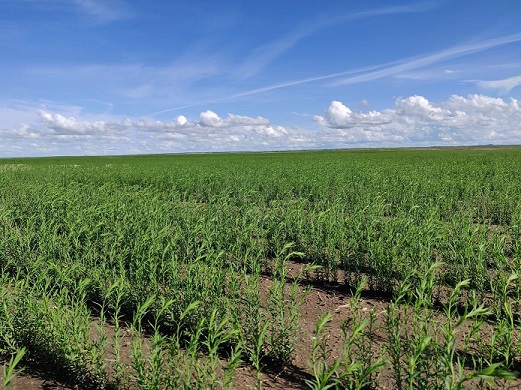Depending on where you are in the province, a mixed bag in terms of weather has left farmers dealing with different struggles this season.

Shannon Friesen, a crops extension specialist, says many producers on the east side of the province are dealing with excess moisture, while the southwest and west central reasons deal with drought conditions.
“We do have quite a bit of the crop that has actually been yellowing due to excess moisture, and actually being in standing water.” says Friesen. “We also have some drought stress happening on the west side of the province due to, of course, a lack of moisture.”
Friesen says the recent rainfall has been helpful for moving crops along, but is hopeful for some heat as well so the process can be accelerated.
Saskatchewan’s agriculture ministry says many crops are behind their normal stages of development for this time of year, and adds the warm weather would help crops advance and wet fields to dry up.

Get daily National news
Friesen says for areas needing the opposite, it’s probably already too late.
“We do have producers in those dryer areas where some of the crops have been prematurely advancing, and prematurely drying down.” says Friesen. “So some of that rain is actually not going to benefit.”
Friesen says there are fields however where that rain will help not only just the crops, but for the pastures as well.

Cropland topsoil moisture is rated as nine per cent surplus, 71 per cent adequate, 18 per cent short, and two per cent very short. Hay and pasture land topsoil moisture is rated as eight per cent surplus, 66 per cent adequate, 22 per cent short and four per cent very short.
The ministry says the recent rainfall will improve hay crops, but estimated yields will continue to be lower than average.
The past few years the province has mainly experienced drought conditions. Friesen says farmer’s optimism is growing.
“We’ve had a lot of things thrown at us over the last couple of years, but for the most part this year, there’s just a little more, I guess, optimism out there. As long as we can get things growing, things should really recover for us.” says Friesen.
A majority of the crop damage this week was due to localized flooding, strong winds, extremely dry soil conditions, hail and leaf spot diseases. Farmers are also trying to combat damage from increasing grasshopper populations, as well as gophers causing damages to crops.
Producers are currently focused on applying fungicides and insecticides, scouting for pests, fixing equipment and haying.


Comments